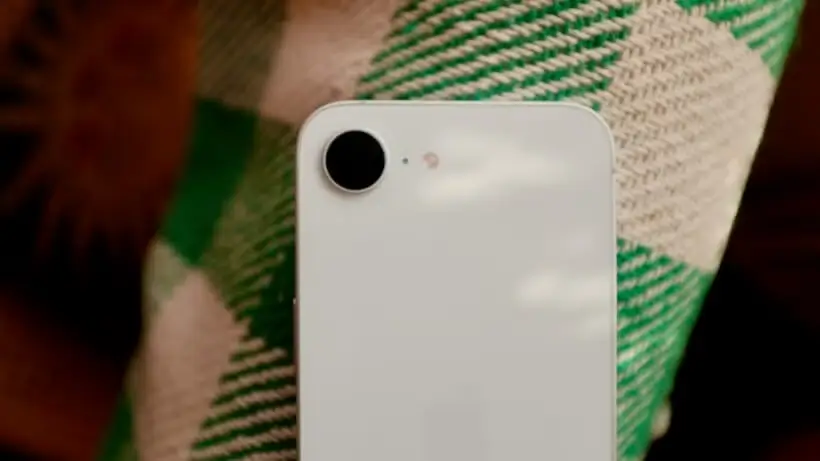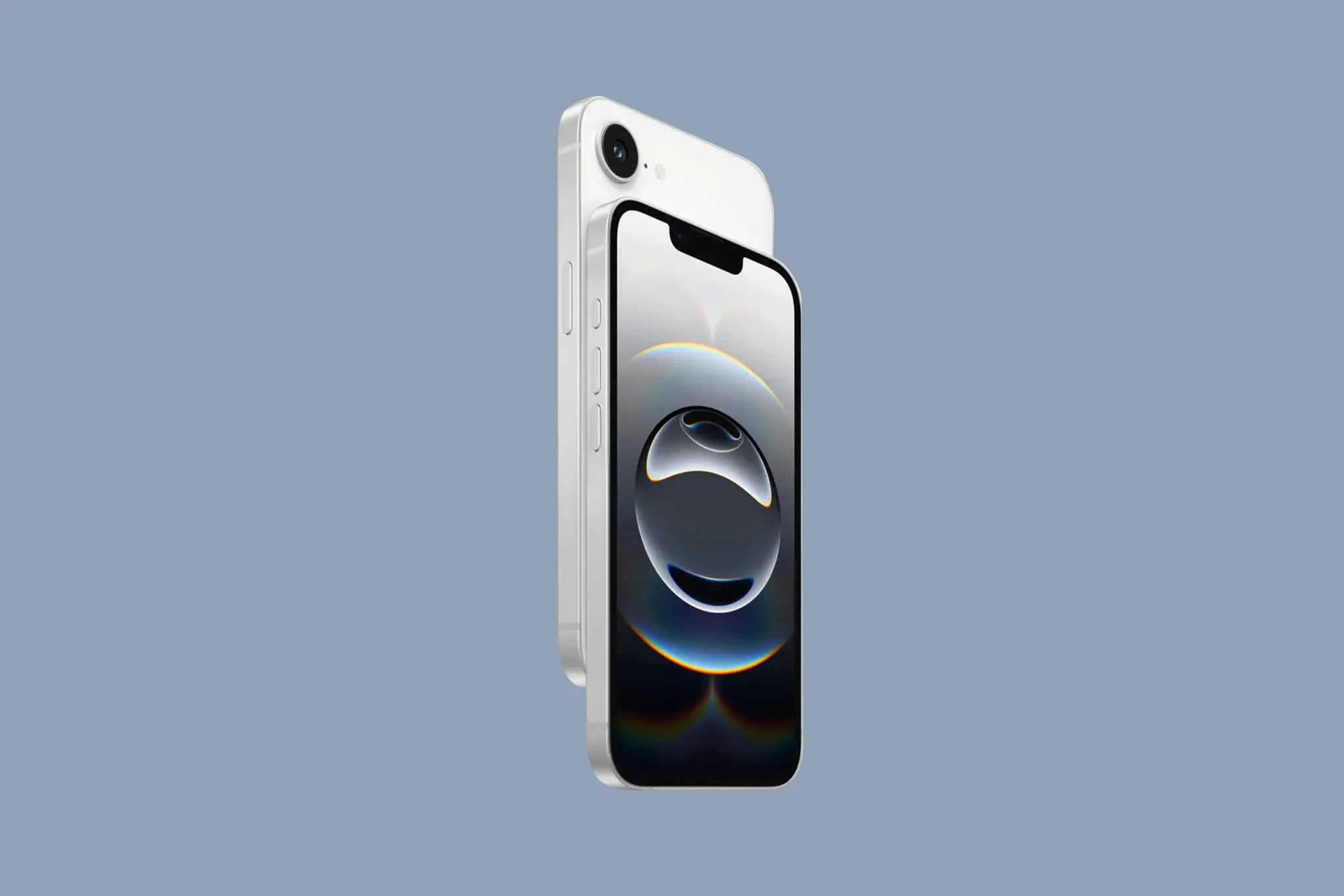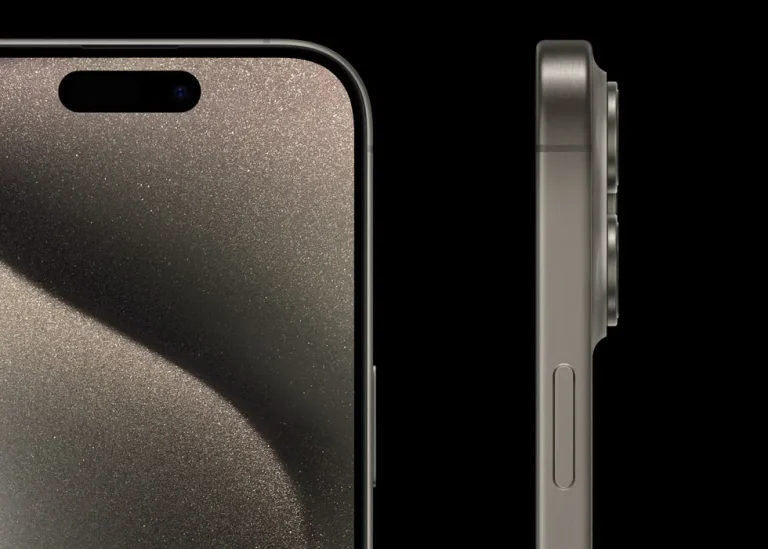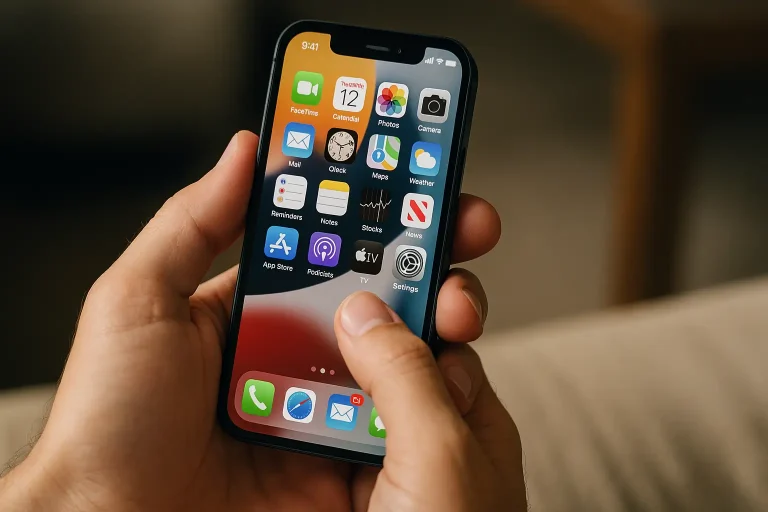Introduction to the iPhone 16e
Apple has unveiled its latest budget-friendly smartphone, the iPhone 16e, marking a significant shift in its lower-cost device strategy. As the spiritual successor to the iPhone SE line, the 16e brings modern iPhone features to a more accessible price point, though at $599, it’s positioned higher than its predecessor.
The iPhone 16e represents a blend of cutting-edge technology and strategic compromises, designed to appeal to users seeking core iPhone functionality without the premium price tag of flagship models. It features a 6.1-inch OLED display, bringing it in line with the design language of more expensive iPhones, and ditches the home button in favor of an all-screen front with Face ID.
Key features of the iPhone 16e include:
- A18 chip, offering performance comparable to the standard iPhone 16
- 48MP main camera with 2x optical-quality zoom
- Apple’s first in-house designed C1 modem for improved power efficiency
- iOS 18 with full Apple Intelligence capabilities
- USB-C port for charging and data transfer
- Improved battery life, surpassing even the standard iPhone 16
While the 16e brings many advancements, it also omits certain features found in pricier models. Notably absent are MagSafe charging, an ultra-wide camera, and the Dynamic Island interface. These omissions help differentiate the 16e from higher-end models and keep costs down.
The iPhone 16e is positioned as an ideal upgrade for users coming from older iPhones or those new to the Apple ecosystem who want a taste of modern iPhone features without the flagship price. It’s also aimed at budget-conscious consumers who prioritize core smartphone functionality over cutting-edge extras.
Available in just two colors – black and white – the iPhone 16e embraces a minimalist aesthetic that harkens back to earlier iPhone designs. This simplicity, combined with its powerful internals and improved camera system, makes the 16e a compelling option for those seeking a no-frills yet capable iPhone experience.

Design and build quality
Building on the introduction’s overview, the iPhone 16e’s design philosophy becomes even more apparent when examining its build quality and physical characteristics. Apple has crafted a device that strikes a balance between modern aesthetics and practical simplicity.
The iPhone 16e features a sleek aluminum frame, reminiscent of the iPhone 14’s design language. This choice of material contributes to the phone’s lightweight feel, weighing in at just 167 grams. The device measures 146.7 x 71.5 x 7.8mm, making it slightly more compact than the standard iPhone 16, enhancing one-handed usability.
One of the most notable design elements is the single-lens camera system on the rear. Unlike its more expensive siblings, the 16e lacks a prominent camera bump, resulting in a nearly flush back panel. This design choice not only contributes to the phone’s minimalist aesthetic but also allows it to lay flat on surfaces without wobbling – a practical benefit many users will appreciate.
The front of the device is dominated by the 6.1-inch OLED display, protected by Apple’s previous-generation Ceramic Shield glass. While not as advanced as the latest iteration found on pricier models, it still offers robust protection against scratches and drops. The display is framed by slightly thicker bezels compared to the iPhone 16, but this difference is unlikely to be noticeable to most users.
As mentioned in the introduction, the iPhone 16e is available in just two colors: black and white. This limited palette further emphasizes the device’s back-to-basics approach, echoing the color options of early iPhone models. The matte finish on the rear glass adds a touch of sophistication and helps resist fingerprints.
Despite its lower price point, the iPhone 16e maintains Apple’s high standards for build quality. The device feels solid and well-constructed, with no creaks or flexing when pressure is applied. The buttons offer satisfying tactile feedback, and the new Action Button (replacing the traditional mute switch) adds versatility to the user experience.
Water and dust resistance haven’t been compromised, with the 16e boasting an IP68 rating. This means the device can withstand submersion in up to 6 meters of water for 30 minutes, matching the capabilities of more expensive iPhone models.
While the iPhone 16e lacks MagSafe compatibility, as noted earlier, it does support standard Qi wireless charging. This omission may disappoint some users, but it’s worth noting that many in the 16e’s target market may not have extensively used MagSafe accessories with previous devices.
The transition to USB-C for charging and data transfer is a welcome addition, aligning the 16e with the broader iPhone lineup and improving compatibility with a wide range of accessories. This change also future-proofs the device as USB-C becomes increasingly ubiquitous.
In summary, the iPhone 16e’s design and build quality reflect Apple’s strategy of offering a streamlined, modern iPhone experience at a more accessible price point. By focusing on essential elements and making calculated compromises, Apple has created a device that feels premium without the flagship price tag.

Display technology
Building upon the design overview, the iPhone 16e’s display technology merits a closer examination. While it shares similarities with its pricier siblings, there are some key differences that set it apart.
The 6.1-inch Super Retina XDR OLED display is a significant upgrade from the LCD panel found in the previous iPhone SE models. This OLED technology provides several benefits:
- Deeper blacks and improved contrast ratios
- More vibrant colors and better overall color accuracy
- Improved energy efficiency, contributing to the device’s excellent battery life
The screen boasts a resolution of 2532 x 1170 pixels, resulting in a pixel density of 460 ppi. This ensures crisp text and sharp images, matching the clarity of more expensive iPhone models. However, there are some compromises to note:
Unlike the standard iPhone 16, the 16e’s display has a slightly lower peak brightness. It can reach up to 800 nits typically and 1200 nits for HDR content, compared to the iPhone 16’s 1000 nits typical and 2000 nits peak. While this difference may be noticeable in direct sunlight, the 16e’s display remains perfectly usable in most conditions.
As mentioned earlier, the 16e retains the notch design rather than adopting the Dynamic Island found on newer models. This means:
- Less screen real estate for status icons and notifications
- No interactive features tied to the Dynamic Island interface
However, the notch houses the TrueDepth camera system, enabling Face ID for secure authentication – a significant upgrade for users coming from Touch ID-equipped devices.
One notable omission is the lack of ProMotion technology. The iPhone 16e’s display is locked at a 60Hz refresh rate, unlike the adaptive 120Hz found on Pro models. While this may disappoint tech enthusiasts, it’s worth noting that:
- 60Hz is still perfectly smooth for most everyday tasks
- The lower refresh rate contributes to the device’s impressive battery life
- Many users upgrading from older models won’t notice the difference
Despite these trade-offs, the iPhone 16e’s display technology represents a significant leap forward for Apple’s more affordable offerings. The OLED panel provides a viewing experience that, in many aspects, rivals that of flagship devices from just a few years ago.
The display also supports key iOS features like True Tone, which adjusts color temperature based on ambient lighting, and Night Shift, which reduces blue light emission in the evenings. These features contribute to a more comfortable viewing experience and potentially better sleep hygiene for users.
For content creators and media consumers, it’s worth noting that the iPhone 16e’s display supports the P3 wide color gamut. This ensures accurate color reproduction for photos and videos, making it a capable device for mobile photography and video editing.
In conclusion, while the iPhone 16e’s display may lack some of the cutting-edge features found in more expensive models, it offers a high-quality viewing experience that will satisfy the vast majority of users. The OLED technology, combined with Apple’s excellent color calibration, results in a screen that’s vibrant, sharp, and perfectly suited for everything from casual browsing to immersive gaming.

Performance and processing power
At the heart of the iPhone 16e lies Apple’s A18 chip, marking a significant leap in performance for the company’s more affordable smartphone offering. This section delves into the processing capabilities of the 16e, highlighting how it compares to its siblings and what users can expect in terms of real-world performance.
The A18 chip in the iPhone 16e is nearly identical to the one found in the standard iPhone 16, with one key difference:
- The 16e’s A18 features a four-core GPU, compared to the five-core GPU in the iPhone 16
- Both variants retain the same six-core CPU configuration (two high-performance cores and four efficiency cores)
- The 16-core Neural Engine remains consistent across both models
This slight reduction in GPU cores allows Apple to maintain a performance edge for the pricier iPhone 16 while still delivering impressive capabilities to 16e users. In practical terms, the impact of this difference is minimal for most users:
- Day-to-day tasks like web browsing, social media, and productivity apps run just as smoothly on the 16e as on the iPhone 16
- The performance gap may become noticeable only in the most demanding 3D games or professional-grade video editing applications
Benchmark results reveal that the iPhone 16e actually outperforms the iPhone 16 in some CPU-focused tests, likely due to optimizations in the chip design and thermal management. This translates to snappy performance across the board, with apps launching quickly and multitasking feeling fluid.
The A18 chip also enables the full suite of Apple Intelligence features on the 16e, as mentioned in the introduction. This means users can take advantage of on-device AI processing for tasks like:
- Advanced photo editing and object recognition
- Natural language processing for improved Siri interactions
- Real-time language translation
While the exact amount of RAM in the iPhone 16e hasn’t been officially confirmed by Apple, reports suggest it matches the 8GB found in the iPhone 16. This ample memory allocation contributes to the device’s smooth multitasking capabilities and helps future-proof it for upcoming iOS updates.
One area where the iPhone 16e truly shines is in power efficiency. The combination of the A18 chip and Apple’s new C1 modem (discussed in the introduction) results in impressive battery life that even surpasses the standard iPhone 16. This efficiency doesn’t come at the cost of performance, as the 16e remains responsive even during extended use.
For users upgrading from older iPhone models or mid-range Android devices, the performance leap offered by the iPhone 16e will be substantial. The A18 chip’s capabilities far exceed what was available in flagship phones just a few years ago, ensuring that the 16e feels fast and capable for years to come.
It’s worth noting that while the iPhone 16e lacks some of the more advanced features found in Pro models (such as the ProMotion display or additional camera lenses), its processing power is more than sufficient to handle any software-based enhancements Apple may introduce in future iOS updates.
In conclusion, the iPhone 16e’s performance and processing power position it as a highly capable device that will satisfy the needs of most users. While it may not boast the absolute peak performance of Apple’s top-tier offerings, the 16e delivers a smooth, responsive experience that belies its more affordable price point. The combination of raw processing power and energy efficiency makes the iPhone 16e a compelling option for users who prioritize long-lasting performance in their daily smartphone use.

Camera capabilities
Building upon the performance capabilities discussed in the previous section, the iPhone 16e’s camera system deserves a closer look. While it may lack the multi-lens setup of its pricier siblings, the single 48MP main camera offers impressive capabilities that leverage the A18 chip’s processing power.
The 48MP sensor utilizes quad-pixel binning technology, combining four pixels into one for enhanced light sensitivity. This results in:
- 12MP images with improved low-light performance
- The option to capture full 48MP RAW images for maximum detail
- A 2x optical-quality zoom achieved through sensor cropping
While the iPhone 16e lacks a dedicated ultra-wide lens, Apple has implemented some clever software solutions to partially mitigate this omission:
- An enhanced panorama mode that stitches multiple shots for wide-angle views
- AI-powered scene recognition to automatically suggest optimal framing
The A18 chip’s Neural Engine plays a crucial role in computational photography, enabling features like:
- Smart HDR 5 for improved dynamic range in challenging lighting conditions
- Deep Fusion for enhanced texture and detail in medium to low-light scenes
- Night mode, which now activates automatically when needed

Portrait mode on the iPhone 16e has been refined, despite the lack of a secondary lens. The A18 chip’s advanced depth mapping capabilities allow for:
- More accurate subject separation
- Improved bokeh effects that rival dual-lens setups
- The ability to adjust depth of field after capturing the image
Video capabilities on the iPhone 16e are impressive, leveraging the A18 chip’s processing power:
- 4K video recording at up to 60 fps
- Extended dynamic range for video up to 30 fps
- Cinematic mode for automatic focus transitions and depth effects in 1080p at 30 fps
While the iPhone 16e doesn’t support ProRAW or ProRes video formats, it does offer:
- The ability to capture and edit in Dolby Vision HDR
- A new AI-enhanced stabilization mode for smoother handheld footage
The front-facing TrueDepth camera, housed in the notch, is a 12MP sensor that supports:
- 4K video recording and Cinematic mode for high-quality selfie videos
- Portrait mode with advanced bokeh and depth control
- Animoji and Memoji for fun, personalized messaging
Apple has also introduced new AI-powered features that take advantage of the A18 chip’s Neural Engine:
- Scene Recognition 2.0, which can identify and optimize camera settings for specific subjects and environments
- Smart Composition, offering real-time framing suggestions based on photographic principles
- Enhanced Night mode portraits, combining multiple exposures for better low-light results
While the iPhone 16e may not match the versatility of multi-lens systems found in pricier models, its camera capabilities are nonetheless impressive. The combination of a high-resolution sensor, advanced computational photography, and AI-enhanced features results in a camera system that will satisfy most users’ needs. For those upgrading from older iPhone models or mid-range Android devices, the iPhone 16e’s camera represents a significant leap forward in mobile photography and videography.
Battery life and charging
Building upon the impressive performance and efficient A18 chip discussed earlier, the iPhone 16e truly shines when it comes to battery life. Apple has made significant strides in this area, positioning the 16e as a leader in longevity among its 6.1-inch iPhone offerings.
The iPhone 16e boasts remarkable battery performance, surpassing even the standard iPhone 16:
- Up to 26 hours of video playback (4 hours more than the iPhone 16)
- Up to 21 hours of streamed video playback
- Up to 90 hours of audio playback
This exceptional battery life can be attributed to several factors:
- The energy-efficient A18 chip, as mentioned in the performance section
- Apple’s new C1 modem, which is designed for improved power efficiency
- Optimizations in iOS 18 specifically tailored for the 16e’s hardware
- The 60Hz display, which consumes less power than higher refresh rate screens
In real-world testing, the iPhone 16e consistently outlasts its predecessors and even some higher-end models. Users can expect the device to easily last a full day of heavy use, with many reporting up to two days of moderate usage between charges.
When it comes to charging, the iPhone 16e offers a mix of familiar and new options:
- Fast charging support: Up to 50% charge in about 30 minutes with a 20W or higher adapter
- USB-C port: As mentioned in the design section, this allows for faster data transfer and broader compatibility
- Qi wireless charging: Supports up to 7.5W
It’s worth noting that while the iPhone 16e supports wireless charging, it lacks MagSafe compatibility. This means:
- No magnetic alignment for wireless chargers
- Maximum wireless charging speed is limited to 7.5W instead of the 15W offered by MagSafe
For users upgrading from older models, particularly those with aging batteries, the iPhone 16e’s battery life will be a significant improvement. The device’s power management is further enhanced by iOS 18’s intelligent features:
- Optimized Battery Charging: Learns from your daily charging habits to reduce battery aging
- Low Power Mode: Extends battery life by temporarily reducing background activities
- Battery Health reporting: Provides insights into battery condition and performance over time
Apple has not disclosed the exact battery capacity of the iPhone 16e, but teardowns and regulatory filings suggest it may have a slightly larger battery than the standard iPhone 16. This, combined with the efficiency improvements, explains its superior battery life.
The impressive battery performance of the iPhone 16e addresses a key concern for many smartphone users. By prioritizing longevity, Apple has created a device that can keep up with demanding usage patterns without frequent recharging. This focus on battery life aligns well with the 16e’s positioning as a reliable, no-fuss option for users who prioritize core smartphone functionality.
In conclusion, the iPhone 16e’s battery life and charging capabilities represent a significant strength, offering users the confidence to use their device extensively throughout the day without battery anxiety. While it may lack some of the advanced charging features of pricier models, the 16e’s endurance and efficient power management make it an excellent choice for users who value long-lasting performance in their daily smartphone use.
Software and user experience
Building upon the hardware capabilities discussed in previous sections, the iPhone 16e’s software and user experience are where Apple’s expertise truly shines. Running iOS 18, the device offers a refined and feature-rich environment that leverages the A18 chip’s power while maintaining the efficiency that contributes to its impressive battery life.
Key aspects of the iPhone 16e’s software experience include:
- Full integration of Apple Intelligence features, as mentioned in the introduction
- Optimized performance tailored to the 16e’s hardware configuration
- A user interface that balances modern design with accessibility
Apple Intelligence on the iPhone 16e brings several notable capabilities:
- Enhanced Siri interactions with improved natural language understanding
- On-device AI processing for faster and more private task completion
- Intelligent suggestions and automations based on user behavior
While the 16e lacks the Dynamic Island of pricier models, Apple has implemented clever software solutions to mitigate this:
- Redesigned notification system that maximizes screen real estate
- Enhanced widgets for quick access to information and app functions
- Customizable Focus modes for tailored experiences throughout the day
The A18 chip’s performance, discussed earlier, ensures smooth multitasking and app launches. This is complemented by software optimizations:
- Improved app memory management for faster switching between tasks
- Background app refresh prioritization based on usage patterns
- Smoother animations and transitions throughout the interface
Privacy and security remain paramount in iOS 18, with the iPhone 16e benefiting from features like:
- Enhanced tracking prevention in Safari
- More granular app permissions and privacy reports
- Continued support for Lockdown Mode for users requiring maximum security
The camera software on the 16e leverages AI to compensate for the single-lens hardware:
- Intelligent scene recognition for optimized settings
- Enhanced computational photography for improved low-light performance
- AI-powered framing suggestions to help users capture better compositions
Accessibility features have been expanded in iOS 18, making the iPhone 16e more inclusive:
- Improved voice control and gesture recognition
- Enhanced visual accommodations for users with varying sight capabilities
- New cognitive accessibility tools for users with memory or attention challenges
The iPhone 16e’s software experience is designed to evolve over time:
- Regular iOS updates to introduce new features and security enhancements
- Seamless integration with Apple’s expanding services ecosystem
- Ongoing optimization to maintain performance as apps become more demanding
While the 16e may lack some hardware-dependent features of higher-end models, its software experience remains quintessentially Apple. The focus on usability, privacy, and ecosystem integration creates a cohesive and satisfying user experience that will appeal to both longtime iPhone users and those new to the platform.
In conclusion, the iPhone 16e’s software and user experience exemplify Apple’s strength in creating a polished, feature-rich environment that makes the most of the device’s hardware capabilities. By offering the full power of iOS 18 and Apple Intelligence in a more affordable package, the 16e provides users with a premium software experience that belies its mid-range price point.
Pricing and value proposition
Building on the comprehensive overview of the iPhone 16e’s features and capabilities, it’s crucial to examine its pricing strategy and overall value proposition. At $599 for the base 128GB model, the 16e occupies a new position in Apple’s lineup, bridging the gap between the now-discontinued iPhone SE and the standard iPhone 16.
This pricing strategy reflects several key factors:
- A shift in Apple’s approach to the “budget” iPhone market
- The inclusion of more premium features compared to previous entry-level offerings
- A deliberate differentiation from the higher-priced iPhone 16 models
When considering the value proposition of the iPhone 16e, it’s important to contextualize its price point:
- It’s $200 less than the standard iPhone 16, while offering many similar core features
- The price represents a significant increase from the iPhone SE 3’s $429 starting price
- It positions the 16e in the mid-range smartphone market, competing with devices from other manufacturers
The iPhone 16e offers several compelling advantages that justify its price:
- Access to Apple’s ecosystem and long-term software support
- The powerful A18 chip, providing flagship-level performance
- Improved camera capabilities compared to previous entry-level iPhones
- Exceptional battery life, surpassing even the standard iPhone 16
However, there are trade-offs to consider:
- The lack of MagSafe compatibility, as discussed in the design section
- A single rear camera, limiting versatility compared to multi-lens setups
- The absence of some premium features like ProMotion display technology
For potential buyers, the value of the iPhone 16e will largely depend on their priorities and use cases:
- Users upgrading from older iPhones will find significant improvements in performance and features
- Android users looking to switch to iOS may find the 16e an attractive entry point
- Budget-conscious consumers who still want access to Apple’s ecosystem and latest technologies
When compared to similarly priced Android devices, the iPhone 16e offers:
- Generally superior long-term software support and updates
- Integration with Apple’s services and accessories ecosystem
- Typically higher resale value, an often-overlooked aspect of overall cost
It’s worth noting that while the $599 price point may seem high compared to some budget Android offerings, it reflects Apple’s premium positioning and the device’s capabilities. The company is betting that consumers will value the overall iPhone experience and ecosystem integration enough to justify the higher cost.
For those considering the iPhone 16e, it’s important to factor in potential carrier deals and trade-in offers, which can significantly reduce the upfront cost. Additionally, Apple’s iPhone Upgrade Program provides an option to spread the cost over time while ensuring access to the latest models.
In conclusion, the iPhone 16e’s pricing and value proposition represent a calculated move by Apple to offer a more premium “budget” iPhone experience. While it may not be the cheapest smartphone option available, it provides a compelling balance of performance, features, and ecosystem benefits that will appeal to a wide range of users. The 16e’s success will ultimately depend on how well it meets the needs of consumers looking for a capable iPhone without the flagship price tag.

iPhone 16e vs iPhone 16 pro: key differences
Building upon our comprehensive examination of the iPhone 16e’s features, it’s crucial to directly compare it with the iPhone 16 Pro to understand the key differences and help potential buyers make an informed decision.
While both devices share the same iOS 18 foundation and A18 chip architecture, several distinguishing factors set them apart:
Design and Build
- Materials: The 16e uses an aluminum frame, while the 16 Pro features a premium stainless steel chassis.
- Display: The 16 Pro boasts the Dynamic Island, contrasting with the 16e’s traditional notch design.
- Size and Weight: The 16 Pro is slightly heavier due to its premium materials and additional camera hardware.
Display Technology
- ProMotion: The 16 Pro’s adaptive 120Hz refresh rate offers smoother scrolling and animations, absent on the 16e.
- Brightness: The 16 Pro can reach up to 2000 nits peak brightness, compared to the 16e’s 1200 nits.
- Always-On Display: This feature is exclusive to the 16 Pro, leveraging its LTPO OLED technology.
Camera System
- Lens Configuration: The 16 Pro boasts a triple-lens setup (wide, ultra-wide, telephoto) versus the 16e’s single lens.
- Optical Zoom: The 16 Pro offers true optical zoom capabilities, while the 16e relies on digital zoom and sensor cropping.
- ProRAW and ProRes: These professional-grade capture formats are exclusive to the 16 Pro.
- LiDAR Scanner: The 16 Pro includes this for enhanced AR experiences and improved low-light autofocus.
Performance
- GPU: The 16 Pro’s A18 Pro chip features additional GPU cores for enhanced graphical performance.
- RAM: The 16 Pro is likely to have more RAM, though Apple doesn’t officially disclose these specifications.
Additional Features
- MagSafe: The 16 Pro supports faster 15W MagSafe charging and magnetic accessories, absent on the 16e.
- Storage Options: The 16 Pro offers up to 1TB of storage, while the 16e tops out at 512GB.
- Connectivity: The 16 Pro supports Wi-Fi 7 and has an Ultra Wideband chip for precise spatial awareness.
Battery and Charging
Interestingly, as noted in our battery life section, the 16e actually outperforms the 16 Pro in terms of overall battery life, thanks to its more efficient display and streamlined feature set.
Price
The most significant difference is the price point. The iPhone 16e starts at $599, while the 16 Pro begins at $999, representing a $400 gap.
Target Audience
These differences highlight the distinct user bases Apple is targeting:
- iPhone 16e: Budget-conscious consumers, casual users, and those prioritizing core iPhone features and longevity.
- iPhone 16 Pro: Power users, photography enthusiasts, and professionals who require cutting-edge technology and maximum versatility.
In conclusion, while the iPhone 16e lacks some of the Pro’s advanced features, it offers remarkable value for its price point. It delivers the essential iPhone experience with powerful performance and excellent battery life. The 16 Pro, on the other hand, justifies its higher price with a suite of premium features catering to users who demand the absolute best in mobile technology.
Ultimately, the choice between the 16e and 16 Pro will depend on individual needs, budget constraints, and how much value users place on the Pro’s additional capabilities. For many, the iPhone 16e will prove to be a more than capable device that doesn’t compromise on the core iPhone experience.

Conclusion: is the iPhone 16e right for you?
As we’ve explored throughout this comprehensive guide, the iPhone 16e represents a significant shift in Apple’s approach to its more affordable smartphone offerings. By blending modern features with strategic compromises, Apple has created a device that caters to a specific segment of the market. But is it the right choice for you? Let’s summarize the key points and help you make an informed decision.
Who should consider the iPhone 16e?
- Upgraders from older iPhones: If you’re using an iPhone SE, iPhone 11, or earlier model, the 16e offers substantial improvements in performance, camera capabilities, and battery life.
- Budget-conscious Apple fans: For those who want the latest iOS features and Apple ecosystem integration without the premium price tag of flagship models.
- Android switchers: The 16e provides an accessible entry point into the Apple ecosystem for those looking to make the switch from Android.
- Casual users: If your smartphone needs revolve around communication, social media, and basic photography, the 16e offers more than enough power and features.
When to consider alternatives
While the iPhone 16e is an excellent device for many users, there are scenarios where you might want to look at other options:
- Photography enthusiasts: If versatile camera options are a priority, the dual or triple-lens setups on higher-end models might be more suitable.
- Power users: Those who push their devices to the limit with intensive multitasking or high-end mobile gaming might benefit from the additional performance of Pro models.
- MagSafe devotees: If you’re heavily invested in the MagSafe ecosystem, the lack of compatibility on the 16e could be a dealbreaker.
- Display perfectionists: Users who prioritize having the best possible screen technology might miss features like ProMotion and higher peak brightness.
Value proposition revisited
As discussed in our pricing section, the iPhone 16e’s $599 starting price positions it as a mid-range option. When weighing its value, consider:
- The longevity offered by Apple’s software support and the efficient A18 chip
- The balance of performance and battery life, which even surpasses some higher-end models
- Access to the latest iOS features and Apple services ecosystem
- The trade-offs in areas like display technology and camera versatility
Final thoughts
The iPhone 16e is not trying to be all things to all people. Instead, it offers a refined, focused iPhone experience that will satisfy the needs of many users. Its strengths lie in its powerful chip, excellent battery life, and access to Apple’s ecosystem at a more accessible price point.
For those who prioritize having the latest flagship features or require maximum versatility, the standard iPhone 16 or 16 Pro models may be more appropriate. However, for users seeking a reliable, capable smartphone that delivers the core iPhone experience without unnecessary frills, the 16e presents a compelling option.
Ultimately, the decision comes down to your individual needs, budget, and how you plan to use your device. By carefully considering the points we’ve discussed throughout this guide, you can determine whether the iPhone 16e is the right fit for your smartphone journey.



